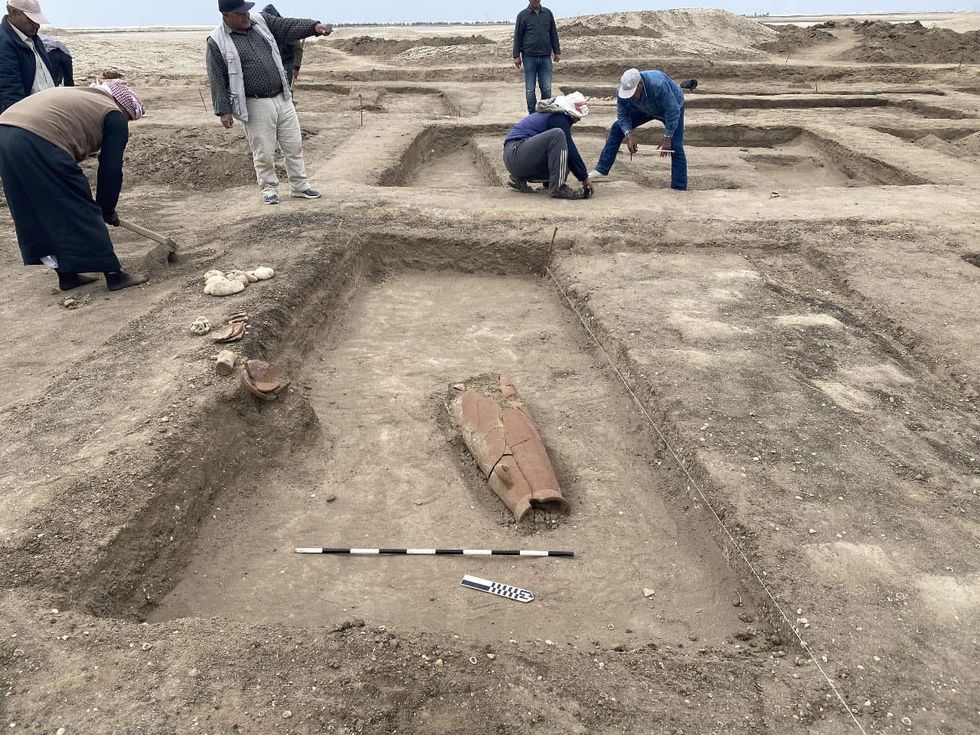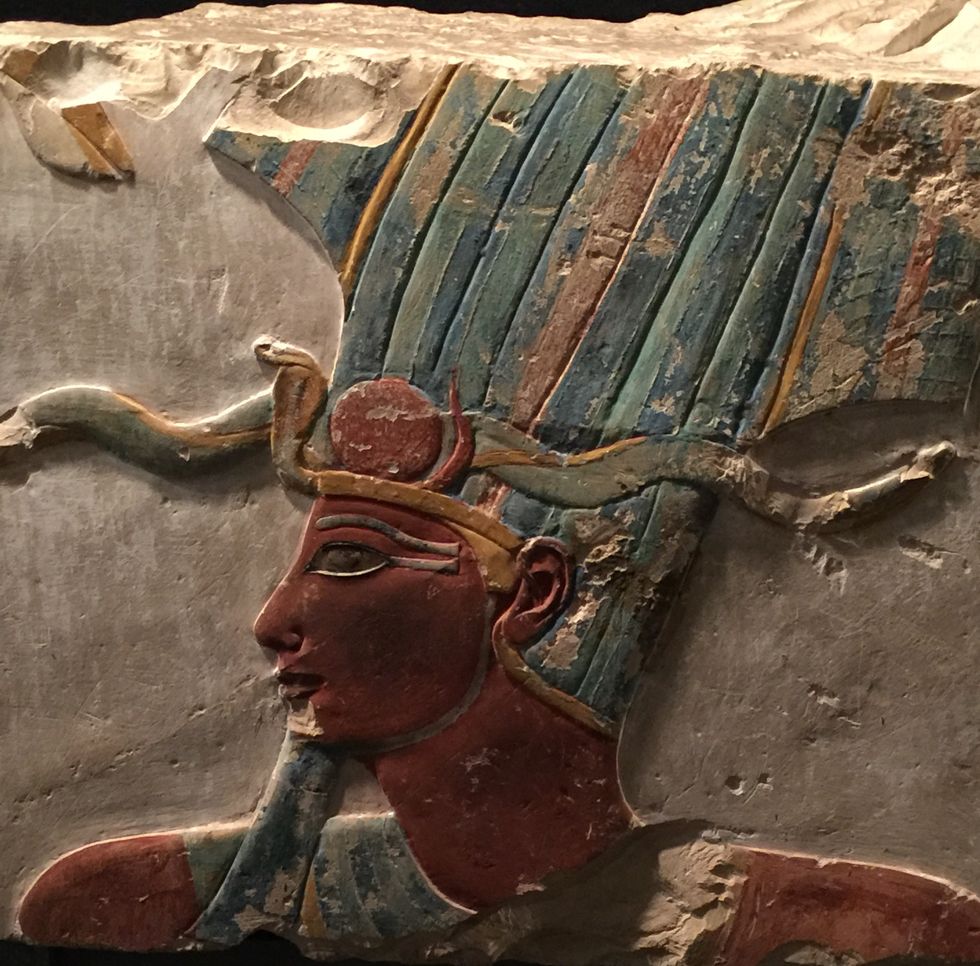Archaeology breakthrough as 3,500-year-old royal retreat discovered in Egypt
The site is thought to have been a temporary residence for ancient Egyptian forces and royalty during military campaigns
Don't Miss
Most Read
Trending on GB News
Archaeologists have unearthed a 3,500-year-old royal "rest house" at a dig site in northeast Egypt.
Researchers at the Tel Habwa archaeological site in the country's Northern Sinai region have uncovered the ancient structure, dating back to the reign of Pharaoh Thutmose III - as well as a significant military route.
The mud-brick rest house is believed to have served as a temporary residence for ancient Egyptian forces and possibly royalty during military campaigns.
It features two central pillared halls with several adjoining rooms, indicating its significance as a place of royal repose.

Researchers at the Tel Habwa archaeological site in the country's Northern Sinai region have uncovered the ancient structure
MINISTRY OF TOURISM AND ANTIQUITIES
The house's architecture also suggests it was not a typical domestic dwelling - rather a specialised rest stop for the pharaoh during his eastern Mediterranean military expeditions.
The lack of pottery fragments found in and around the building further supports its use as a temporary residence rather than a permanent settlement.
Dr Mohamed Ismail Khaled, secretary general of Egypt's Supreme Council of Archaeology, said: "It is likely that this building had been used as a royal respite due to the architectural planning of the building and the scarcity of pottery fractures inside."
The Egyptian Ministry of Tourism and Antiquities has supported his assessment, noting that both the structure's design and interior artefacts point to its function as a royal retreat.
MORE ARCHAEOLOGY BREAKTHROUGHS:

Researchers also found two inscribed cranes bearing the name of Thutmose III
WIKIMEDIA COMMONS
Tel Habwa, situated approximately 100 miles northeast of Cairo along the Suez Canal, was positioned on the ancient "Horus Road" that connected Egypt to the Gaza Strip through the Sinai Peninsula.
This strategic route was vital for troop movements and military campaigns in antiquity.
Professor Ramadan Helmy, Director of the North Sinai Archaeology Region and head of the mission, confirmed the building's age through "the analysis of stratigraphic layers, pottery fragments found nearby, and the discovery of two inscribed cranes bearing the name of Thutmose III".
And further excavations at Tel Habwa have revealed evidence of the site's evolution over time, including its transformation into a burial ground during the Third Intermediate Period, which lasted from around 1077 to 664 BC.
Archaeological findings indicate the area was repurposed as a cemetery in subsequent dynasties.
Various types of locally-produced pottery were discovered across different layers of the site, with evidence specifically pointing to the burial of children during this later period.









